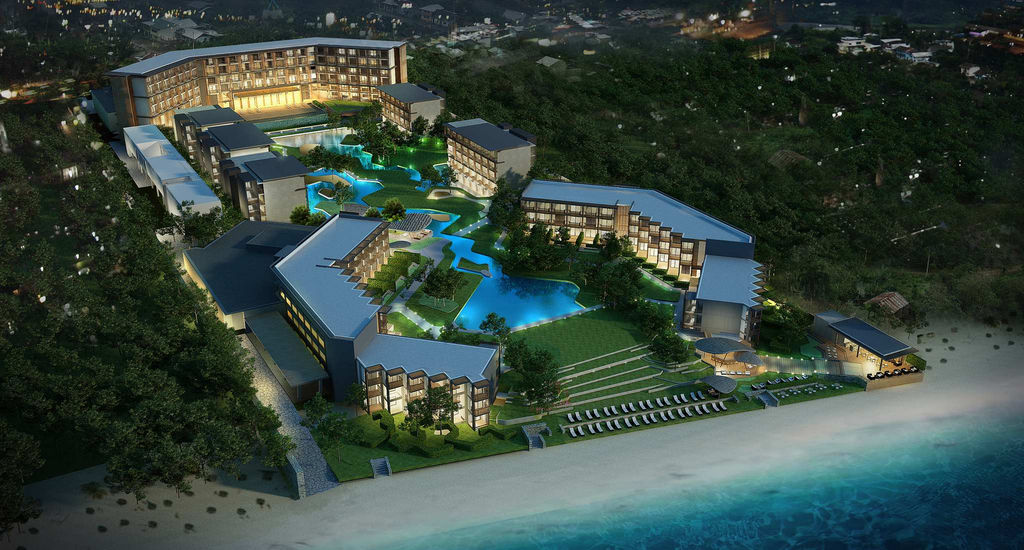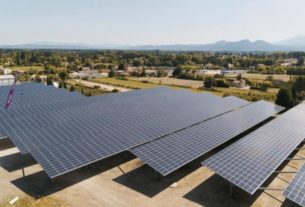
Thailand’s proposed southern Land Bridge threatens Thai island gem
Locals fear industrial push may negatively impact Koh Phayam’s natural attractions
Located 17 kilometres off the Andaman Sea coast, Koh Phayam, covering a 35km² area, is the second largest island in Ranong province.
Blessed with unspoiled forests and pristine beaches, the island attracts visitors seeking peaceful recreation amid pristine nature and the charming lifestyle of islanders who still make a living by catching fish.
In recent years, Koh Phayam has been hailed as a model of sustainable tourism and economic growth that has still preserved its natural resources.
According to local authorities, the island’s tourism substantially contributes to Ranong’s economy.
“Koh Phayam’s tourism sector alone can make up to one billion baht a year. That is a significant portion considering the province’s overall annual revenue of three billion baht,” Chaiyut Anusiri, acting permanent secretary of the Koh Phayam administrative organisation, said.
With cooperation between the public and private sectors, the island maintains its allure as a sustainable tourism destination which pulls in tourists but still adheres to strict conservation measures.
NOW COMES THE THREAT
The government’s proposed Land Bridge project, which aims to bolster connectivity between the Gulf of Thailand and the Andaman coast and herald prosperity for the region, has created concerns among the public and conservationists, who fear the development will harm the island’s environmental harmony.
The mega-sized project would link the Pacific and Indian oceans via the construction of deep-sea ports in Chumphon and Ranong, with a 100-kilometre expressway and rail network between them.
Koh Phayam falls within the proximity of plans for a proposed 5,600-rai Ranong deep-sea port at Laem Ao Ang on the Andaman seashore.
The plan also includes three breakwaters, totalling 4km long, and some 7,000 rai of sea reclamation.
The port is likely to affect Ratchakrut sub-district, Koh Phayam sub-district, Muang district, Muang Kluang sub-district and Kapoe district, including six communities, two national parks, two marine and coastal protected areas, national reserved forest, and coral reserves.
On top of that, a tunnel and landbridge spanning 109km from Ao Ang Pier in Ranong to Laem Riew Port in Chumphon would also be built.
Prime Minister Srettha Thavisin sees the project as a flagship of his efforts to boost the economy. Regardless, locals have aired their concerns, saying local communities would be affected if the project progresses, and possibly find it hard to survive.
In December last year, they met the prime minister, urging the government to carefully consider public opinion, especially the locals.
Their key message was that the project’s feasibility study was not yet complete or clear, but the prime minister has already taken the plan on roadshows, trying to sell it to international investors. They believe the project will threaten the island’s tranquillity, degrade the environment and disrupt the economy.
LOCAL LIVELIHOODS AT RISK
As plans for the Land Bridge project in Chumphon are advancing, the issue of land expropriation and the environmental impact has sparked anxieties among locals in Ranong’s Koh Phayam.

According to local authorities, many areas of Koh Phayam are inhabited by ethnic groups and sea gypsies, most of whom have no formal land title deeds; questions about compensation and property rights were raised.
Government funding and public consultations were pivotal in addressing these issues, the group said.
During the mobile cabinet meeting in Ranong in January, government officials and local tourism operators were sharply divided on the Land Bridge development despite the government’s efforts to engage stakeholders through public hearings.
Supporters anticipated economic benefits, while others worried about disruptions to the local environment and traditional ways of life. Koh Phayam was a focal point of the concern.
The mobile meeting also saw locals protesting against the Land Bridge. They said the project could encroach on coastal areas and farmland, affecting fishing communities, tourism operators, and farmers.
Parinya Sakulthong, village headman of Koh Phayam sub-district, foresees increased tourism opportunities from the project. However, he is at the same time cautious about the potential environmental repercussions it may bring.
He pointed to the issue of soil erosion and its adverse impact on the marine ecosystem.
Koh Phayam’s economic lifeline, he says, hinges largely on tourism. But when peak tourism season ends, the island needs revenue from agriculture and aquaculture to help secure its year-round prosperity, especially during the monsoon season. Hence the need for sustainable and comprehensive development, he said.
THE FUTURE IS UNCLEAR
Pradit Rungroj, president of Koh Phayam Administrative Organization, said public hearings held in Ranong and Chumphon in August last year by the Office of Transport and Traffic Policy and Planning regarding the Land Bridge project seemed to not assuage concerns raised by various agencies, civil society groups, and locals.
Some also air concerns regarding the project’s cost-effectiveness and logistical challenges faced by shipping operators.
During the hearing, economics experts said the huge investment required for the project may outweigh the potential benefits, particularly for shipping operators navigating between Chumphon province on the Gulf of Thailand side and Ranong province on the Andaman Sea side.
The prospect of investing in new vessels or retrofitting existing ships poses financial burdens, raising doubts about the project’s viability.
As discussions surrounding the Land Bridge project intensify, the government says it remains receptive to input from all stakeholders.
The fate of Koh Phayam hangs in the balance, with its residents and environmental advocates opposing initiatives that threaten the island’s natural beauty and tranquility.
In the face of mounting opposition, the government faces a daunting task in striking a delicate balance between economic development and environmental preservation.
Source: https://www.bangkokpost.com/thailand/general/2808160/land-bridge-threatens-island-gem



